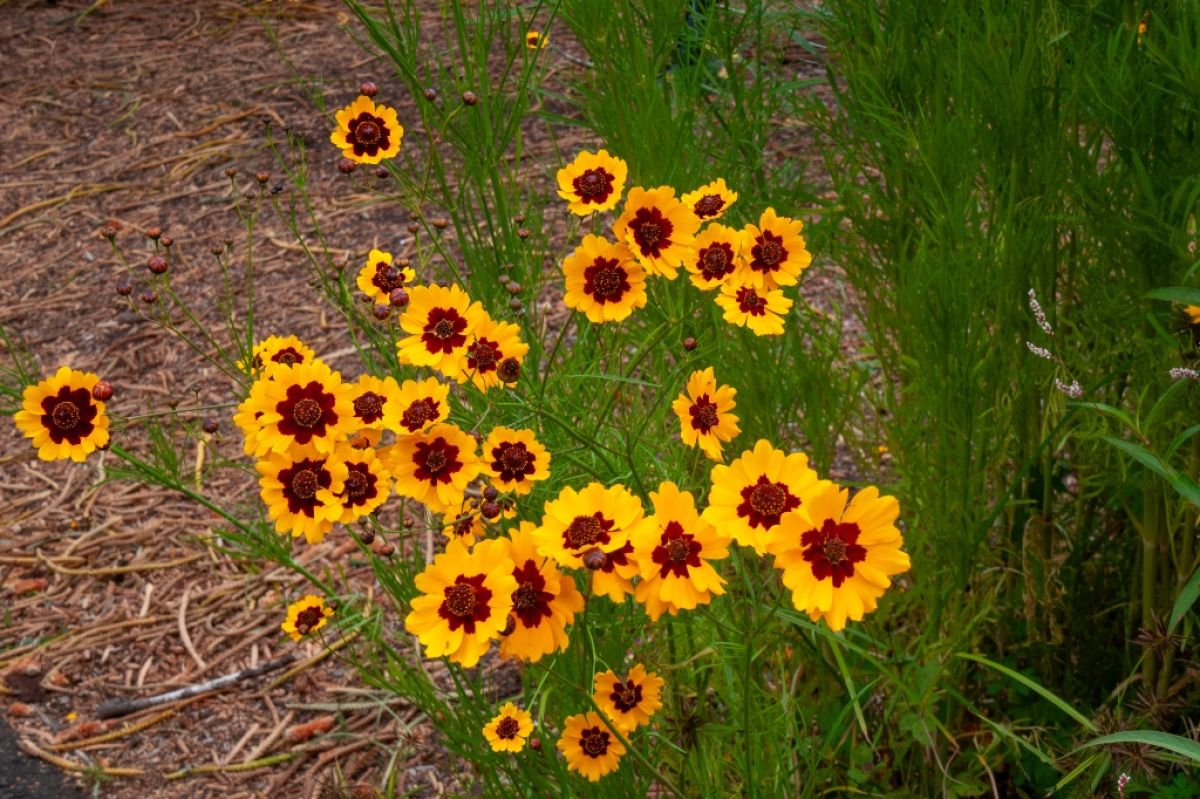Tickseed is the unfortunate common name for coreopsis.
Coreopsis is from the Greek word koris meaning bug and opsis meaning resemblance to. This is because the seeds of coreopsis took like small ticks.
The flowers are shaped like tiny daisies, and the plant is as American as apple pie. It was not found growing anywhere else in the world as a native. It was taken from here to England in 1725.
It is found in sunny meadows from Michigan to Florida and as far west as New Mexico. One species, Coreopsis grandiflora, grows in the southern plains.
Perennial Coreopsis verticillata, which grows wild from Maryland to Georgia, produces an abundance of quite small golden yellow daisy shaped flowers with fine cut leaves.
Coreopsis tinctoria was found in Arkansas and is a bicolored annual with red petals tipped with yellow. Native Americans used these wildflowers to make dye, and some tribes used the roots to make an antidote for diarrhea.
In my zone 6 garden, I grow Coreopsis ‘Zagreb’, which flowers profusely from early summer into fall. It spreads but not as aggressively as some species. I love that it is easy-care and requires little water once it is established and provides me with lots of flowers. When the flowers cease, I cut it back hard and soon the flowers return.
This is Moya Andrews, and today we focused on tickseed.










